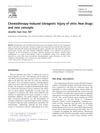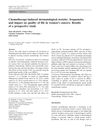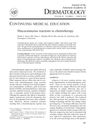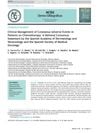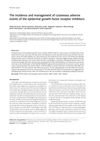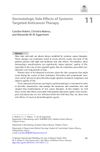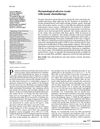Cutaneous Adverse Events to Systemic Antineoplastic Therapies: A Retrospective Study in a Public Oncologic Hospital
November 2021
in “
Anais Brasileiros de Dermatologia
”
cutaneous adverse events systemic antineoplastic therapy nail changes peri-ungual changes classical chemotherapy papulopustular eruption acneiform eruption EGFR inhibitors systemic corticosteroid therapy hand-foot reaction hand-foot syndrome skin side effects chemotherapy epidermal growth factor receptor inhibitors corticosteroids

TLDR Skin side effects from cancer treatments can lead to changes in therapy and are common, with nail changes being the most frequent.
A retrospective study of 138 patients at a Brazilian oncologic hospital found that the most common skin side effects from systemic antineoplastic therapy were nail and peri-ungual changes, affecting 40 patients (20% of dermatological toxicities). Classical chemotherapy was the main cause of these adverse events (AEs), with 73 cases (46.2%). Other AEs included papulopustular eruption (26 cases, 13.0%) and acneiform eruption (24 cases, 12.0%), mostly due to the use of EGFR inhibitors and systemic corticosteroid therapy respectively. The study also found that 24 patients (17.4%) had their cancer treatment changed or interrupted due to AEs, most commonly from papulopustular eruption, hand-foot reaction, and hand-foot syndrome. The study concluded that these skin side effects often affect patients and can result in changes to their cancer treatment, highlighting the need for dermatologists to stay updated for accurate diagnosis and treatment of AEs.
